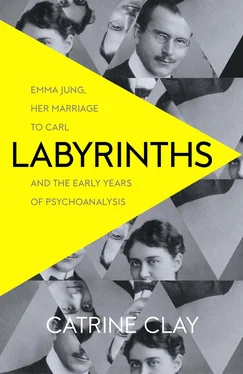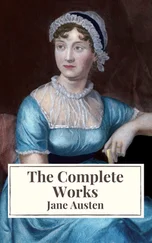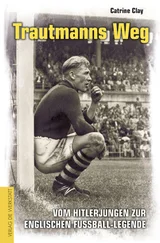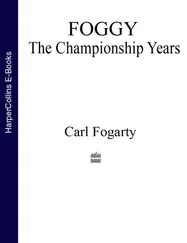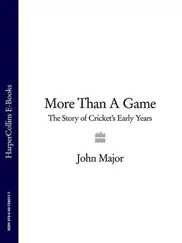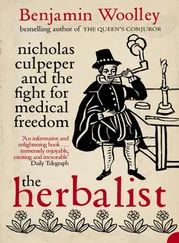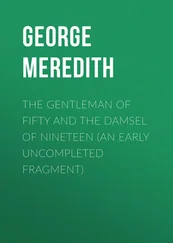As for Carl Jung’s first impressions of Freud: ‘In my experience, up to that time, no one else could compare with him,’ he wrote later. ‘There was nothing the least trivial in his attitude. I found him extremely intelligent, shrewd, and altogether remarkable.’ Carl did not get back to the hotel until two in the morning, having to call out the night porter, by which time Emma was fast asleep.
Over the next five days a routine was established: the visitors would be picked up from the hotel every morning by one of the Freud family to be shown around the city. By the end of each day’s sightseeing everyone was exhausted, everyone except Jung, who enjoyed a rude energy throughout his life, and who would hurry along to 19 Berggasse for his late-night sessions with Freud, talking psychoanalysis, the new and shocking movement that the Herr Professor was leading with missionary zeal, and which, it soon transpired, he meant to bequeath to this brilliant young doctor from the Burghölzli asylum, naming him his ‘crown prince and heir’ with typical impulsiveness, and much to the annoyance of his Viennese colleagues.
The reasons were obvious: not only was Carl Jung brilliant, young and energetic, he was charismatic – an essential prerequisite for a leader. In addition, all the other men in the Viennese group were Jewish, whereas Jung was a Gentile, an Aryan from Switzerland. Freud knew this was the only way psychoanalysis could reach a wider, international public, transforming it into a world movement. He knew it because he had lived with anti-Semitism all his life. As much as he tried to ignore it he knew he could never overcome it. As he wrote to one of his most loyal followers, Karl Abraham, in December 1908: ‘Our Aryan comrades are really completely indispensable to us, otherwise Psycho-Analysis would succumb to anti-Semitism.’
The Vienna Emma and Carl Jung visited at the beginning of the twentieth century was a great cosmopolitan city of 2 million inhabitants, only half of whom had Heimatberechtigung , that is, were legally domiciled Viennese German-speaking Austrians. The rest came from the four corners of the Austro-Hungarian Empire: Bohemians, Moravians, Hungarians, Poles, Czechs, Croats, all bringing different languages and embracing different religions. And Jews, many Jews. These ranged from Vienna’s poorest inhabitants living in the slums of Leopoldstadt to the new professional classes, lawyers, writers, journalists, artists and doctors like Freud, and the very richest: the fabulously wealthy merchants and bankers who lived in the nouveau riche Ring district in houses so large they were referred to as palais , often built in the neo-Renaissance style with columns, loggias and caryatids. It was these wealthy Jews who had helped finance Emperor Franz Joseph’s transformation of Vienna from the walled medieval city it once was to the capital of imperial grandeur which Emma and Carl saw all about them.
The sheer scale of it all was staggering. The grand boulevard of the Ring offered a dramatic setting for the Rathaus and Reichsrat, the city hall and parliament, as well as the Opera, the Burgtheater, the churches of St Stephen and the Votivkirche, the stock exchange, and, leading to the Heldenplatz, a vast columned piazza in front of Kaiser Franz Joseph’s Hofburg palace adorned with two massive equestrian statues, one of Prince Eugene of Savoy, the other of Archduke Charles of Austria. Then there were the museums – the one dedicated to natural history being of particular interest to Emma – and the many parks where you could wander up statue-lined avenues, sit by fountains or listen to one of the military bands playing Viennese waltzes and marches or melodies from the latest operetta. Everywhere you looked there were uniforms, army officers of the empire in red or pale blue, with sashes, epaulettes, gold braid, plumed helmets, swords, sabres, and highly polished boots. Every official appeared to have a uniform too, even the tram drivers, and little boys were often dressed in miniature military uniforms for their Sunday best.
The Hungarian court put on frequent displays of imperial pomp and power, such as the City Regiment’s daily march. On one occasion when Martin Freud was with Carl and Emma in the Ring district, Emperor Franz Joseph’s coach drove past, resplendent in red and gold with liveried coachmen and postilion. The Jungs had never seen such a thing and Martin was amazed to see the Herr Doktor, usually so superior, pushing to the front of the crowd, ‘like a small boy’ thrilled to catch a glimpse of the emperor with his companion, the former actress Katharine Schratt, seated at his side. For the Jungs, from small, republican Switzerland, it was the stuff of fairy tales. Whether visiting the famed Schiffmann’s department store, illuminated with the latest forms of electric lighting, or Demel’s, where the cakes and the Sachertorte were the best in the world, or joining the daily Corso along the Kärntner Ring, where Viennese society paraded in the latest fashions, everything dazzled. The Baedeker travel guide put it nicely: ‘With limited time, a week would suffice for a superficial overview of everything worth seeing.’
In the evenings after Carl had left for 19 Berggasse, Emma rested in the hotel before venturing out into the city – to the Burg Theatre or the Opera or to one of the famous Viennese operettas, perhaps with Binswanger, perhaps with one of the Freud ladies. Or she might stay in the hotel and dine in their Salle de Diner and later sit in one of their more intimate salons to read before retiring to her bedroom. She was surrounded by opulence, the Grand being the very first of the fashionable hotels of Vienna, built in the 1870s, with 300 bedrooms, half of which had ensuite bathrooms – a luxury as yet unheard of in Zürich. It had central heating and electric lighting, its own telegraph office in the foyer from which guests could send telegrams and make telephone calls with the assistance of well-trained telegraphists, and a private fiacre carriage service to take them anywhere they wished. So Emma could not have been better cared for whilst her husband was with Professor Freud. But she might have been happier if Carl had whiled away some of those evening hours with her.
Aside from psychoanalysis and the campaign to conquer the world, Freud and Jung talked about themselves – a natural transition since psychoanalysis dealt with neuroses and psychoses and all manner of obsessive behaviours, most of which appeared to have their roots in childhood, including their own. The subject they discussed most was sex: specifically, Freud’s theory that sexual trauma in childhood was the root cause of later neuroses and hysteria. It might be sexual abuse by a stranger or a family friend, or by a family member in which case it was incest. Freud had many examples from his own patients who came to him in the first instance because they were unaccountably paralysed, or suffering from chronic anxiety, depression, physical pain, sleeplessness, paranoias. Time and again it transpired that they were repressing early sexual experiences, though by 1907 Freud had modified his earlier view that all cases of hysteria had a sexual origin. He and his colleague and teacher Professor Breuer had published their Studies on Hysteria in 1895, by which time some doctors were diagnosing their female hysterics with sexual dysfunction and treating them with hypnosis or various forms of massage, including that of their genitals to bring about orgasm. But these were not subjects spoken about openly, except by Freud, who made sexual repression the linchpin of his work, shocking the general public and plenty of his medical colleagues in the process. His ‘cure’ was revolutionary: the ‘talking cure’ of psychoanalysis, designed to uncover the origin of the neuroses rather than merely treating them. The unconscious, Jung and Freud agreed, was the key to everything. And the key to the unconscious was the dream.
Читать дальше
